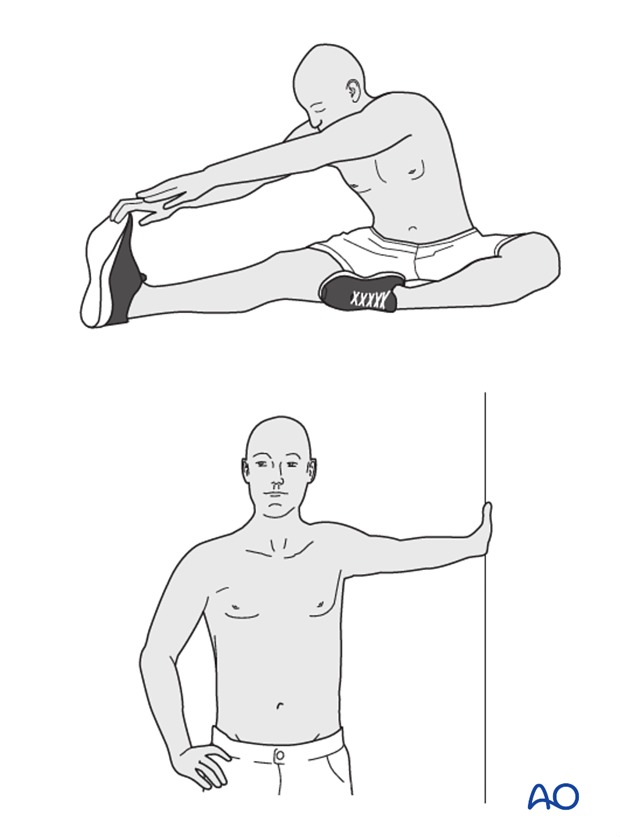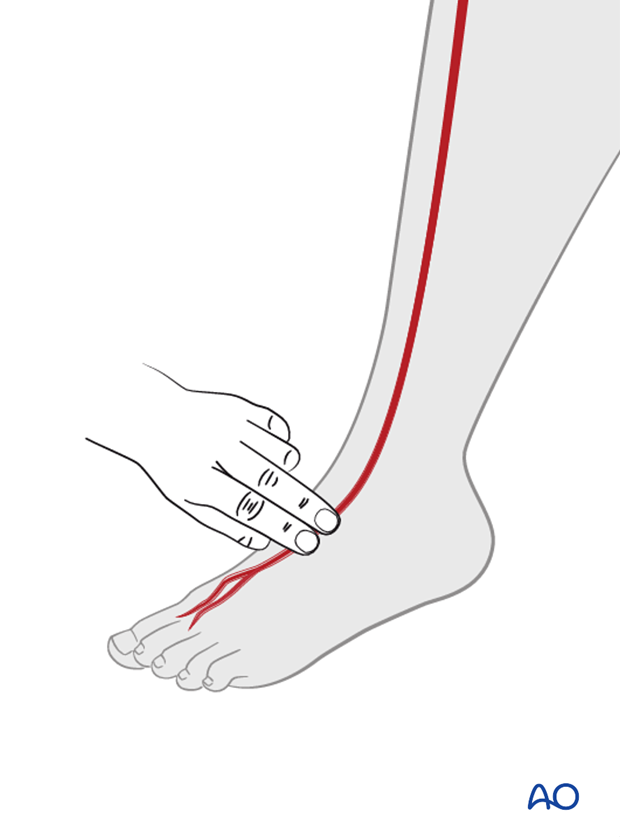Patient examination
1. Physical examination
Assessment of spinal alignment
Patient typically presents with hyper kyphosis above 40° and compensatory hyperlordosis of the cervical and lumbar spine.
Typically coronal balance is normal while sagittal balance is negative.

Kyphosis tends to increase with forward bending.

If the deformity does not fully correct with the patient lying supine, extend the spine using a bolster placed under the apex of the deformity.
This helps evaluate the rigidity of the deformity.

In a prone position the patient is asked to lift the head. In Scheuermann patients the spine will not correct and only the neck will move.
This allows for differential diagnosis with postural kyphosis, where the curve is harmonic during forward bending, and correct with extension in prone position.

Specific muscle examination
Muscle examination might reveal tenderness above and below the deformity, and hamstring and pectoral tightness being common findings.

Presence of any cutaneous abnormalities
The presence of cutaneous abnormalities such as hairy spots or "café au lait" spots can be a presence of non-idiopathic types of scoliosis and should be kept in mind.

Indicators of maturity
Development of secondary sexual characteristics is a rough indication of skeletal maturity and should be kept in mind.
Gait
Gait assessment is important for indicating any possible leg length discrepancies or possible ataxia which may be an indication of spinal cord disorders.
Sensory and motor examination
Sensory and motor examination is performed in routine fashion to ensure there are no deficits or asymmetries.

Reflex examination
Upper and lower extremities should be examined for asymmetries and deep tendon reflexes. In addition the abdominal reflex should be assessed for asymmetries as well. The presence of reflex asymmetry from side to side can be an indication of neuro axis abnormalities and may warrant further examination such as the use of MRI.

Clonus or a positive Babinski may be an indication of upper motor neuron disease or spinal cord disorders. The presence of these reflexes should warrant further examinations by MRI.

Neurovascular examination
Distal pulses are assessed to ensure adequate perfusion of all extremities.

2. Radiological examination
Essential radiographs
36 inch full casette standing radiographs in PA (with patient facing the film) …

...and lateral planes.
One should pay attention to the following characteristics of vertebral body deformity:
- Wedging of the vertebral body
- Narrowing of the intervertebral disk space
- Irregular vertebral endplates
- osteophytes

Measurement of Cobb angles
In the AP view Cobb angles are measured from T5- T12 and from the upper kyphotic vertebra to the distal kyphotic vertebra.

Curve flexibility
To evaluate the flexibility of the curve record an extension film with the patient on supine position with a sandbag under the apex.
Curves that do not correct at least 50% should be considered for a Ponte osteotomy or anterior release.

3. MRI examination
MRI may be useful for differential diagnosis. In addition it will show any endplate or disk abnormalities like Schmorl nodes (not seen in this image).

MRI of Schmorl nodes.














